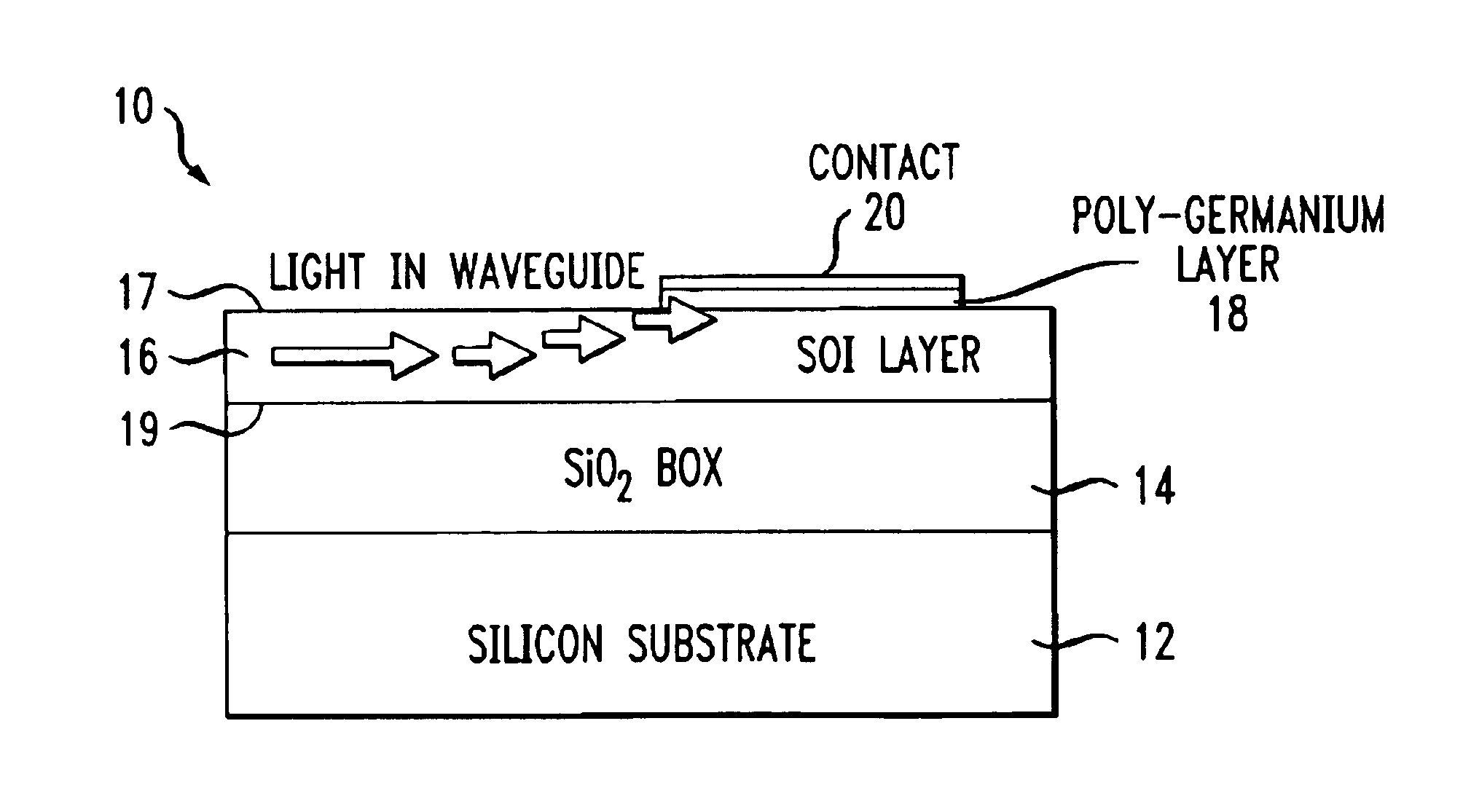Polycrystalline germanium-based waveguide detector integrated on a thin silicon-on-insulator (SOI) platform
a technology of thin silicon and waveguide detector, applied in the field of optical detectors, can solve the problems of lack of available component integration, high cost, high power consumption, etc., and achieve the effects of low dark current operation, high speed, and efficient collection
- Summary
- Abstract
- Description
- Claims
- Application Information
AI Technical Summary
Benefits of technology
Problems solved by technology
Method used
Image
Examples
Embodiment Construction
[0030]Prior to describing in detail the poly-germanium SOI-based photodetector of the present invention, it is useful to briefly describe the working of a conventional, normal incidence photodetector. FIG. 1 illustrates, in cross-sectional view, one such conventional prior art detector 1. Detector 1 is considered a “normal” incidence photodetector since the direction of the incoming light beam is perpendicular to the plane of the impinging surface, in this case, an AR coating layer 2. Detector 1 is a p-i-n photodetector comprising a p-doped poly-germanium layer 3, an intrinsically doped layer 4 and an n-doped layer 5. The electrical contacts are formed on opposing sides of detector 1, as shown, with a bottom contact 6 and a top, ring-shaped contact 7. The thickness and doping of layers 3, 4 and 5 determine the amount of light absorbed and the speed of response of detector 1. The absorption area within p-doped layer 3 is typically on the order of 100 μm2 (the larger absorption area r...
PUM
 Login to View More
Login to View More Abstract
Description
Claims
Application Information
 Login to View More
Login to View More - R&D
- Intellectual Property
- Life Sciences
- Materials
- Tech Scout
- Unparalleled Data Quality
- Higher Quality Content
- 60% Fewer Hallucinations
Browse by: Latest US Patents, China's latest patents, Technical Efficacy Thesaurus, Application Domain, Technology Topic, Popular Technical Reports.
© 2025 PatSnap. All rights reserved.Legal|Privacy policy|Modern Slavery Act Transparency Statement|Sitemap|About US| Contact US: help@patsnap.com



